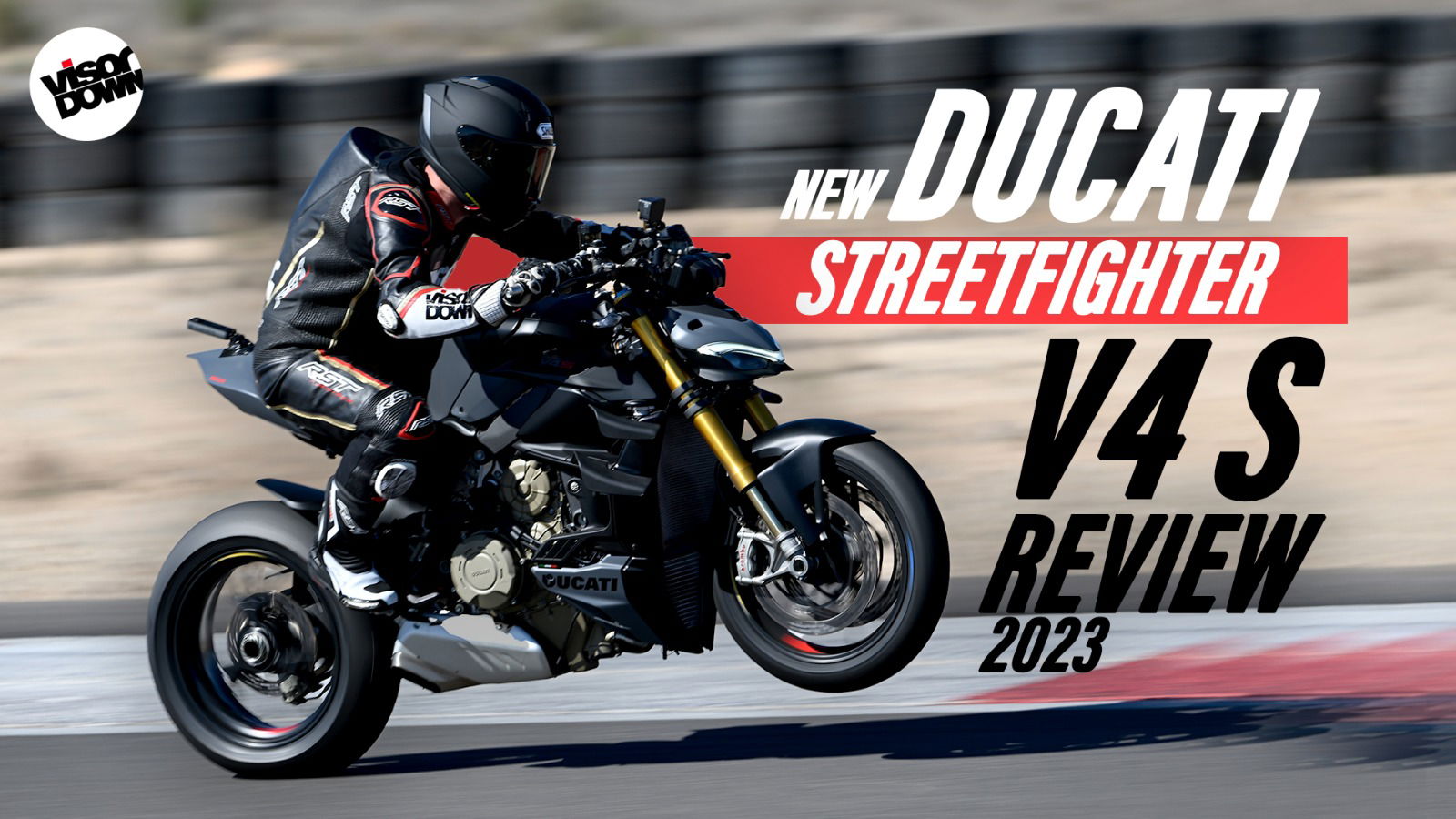Ducati MIG-S E-MTB review – riding the £5,390 mountain bike
This is a slightly different review than normal for Visordown, as we took the Ducati MIG-S E-MTB for a spin along some local trails

THE E-mountain bike (E-MTB) sector is big business right now, and usurpingly it is something that motorcycle makers are keen to tap into. KTM, Yamaha, and Ducati are just a few of the big-name motorcycle makers that also offer E-MTBs of one kind or another.
And while I’m not an accomplished mountain bike rider, I no longer need stabilisers and when the chance was offered to hop on the Ducati MIG-S for a bit of a test, I jumped at the chance. The MIG-S is classified as an all-mountain bike, meaning it is set up for a variety of disciplines, from light off-road trails to more technical down-hill runs. While we don’t have many mountains over here in Coventry, we do have a decent amount of trails and routes that run from the city out into the sticks. The perfect setting for an early spring cycle ride.

How much is the Ducati MIG-S?
Like all of these E-MTBs, the MIG-S isn’t the kind of thing you buy on a whim. In fact, at £5,390 it is a fair old chunk of change to spend on a high-tech pushbike. You do though get a fair amount of top-spec kit for that money though, With RockShox suspension front and rear, a SRAM NX12 derailleur and SRAM 4-pot calipers at the front. It also looks bloody good and so it should, as the colour scheme for the bike was dreamed up by helmet painter to the stars Aldo Drudi.

Ducati MIG-S motor
First up, a bit of explanation about the motor of the bike, for those that don’t know. This isn’t some electric bike with the motor directly powering the rear wheel. There is no throttle to speak of, and if you stop pedalling the bike will coast to a stop like a conventional bicycle. What you get though is a Shimano EP8 ‘engine’, that assists you when you are pedalling the bike. The motor unit is claimed to weigh 2.6kg and can provide the rider with 85Nm (62lb-ft) of torque. In reality, it feels like when you pump the pedals, there are another three or four pairs of legs joining in to help you.
It makes steep climbs (the kind that you simply wouldn’t be able to ride up on a conventional mountain bike) an absolute doddle. You just have to keep the pedals moving in the right direction and the bike will seemingly climb up pretty much any slope.
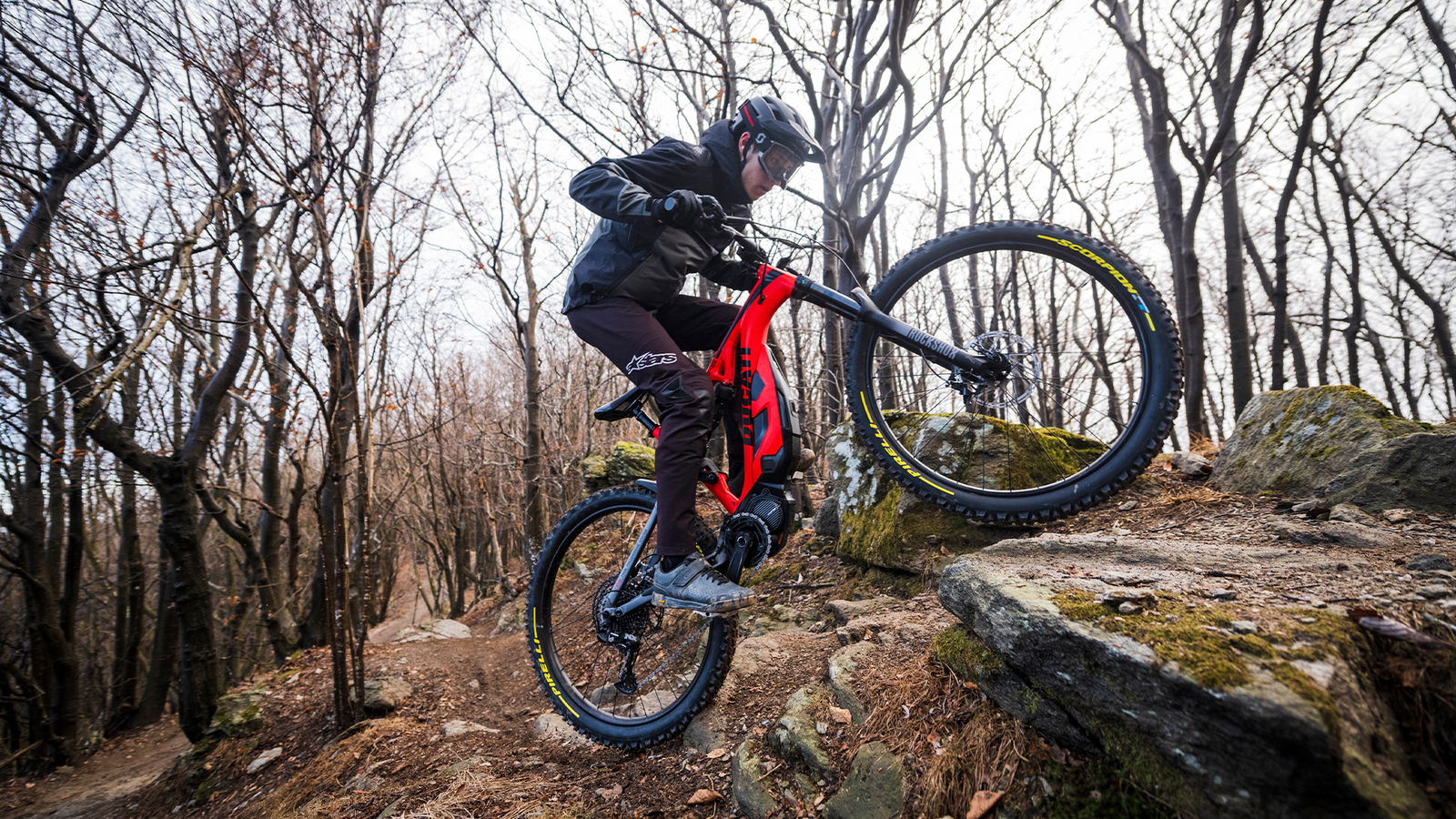
You have some modes to play with also, each offering different assistance levels and range to empty. With me not riding huge distances on the bike, I wasn’t too fussed about the range but was in offering my chicken legs the greatest amount of help. To that note, I kept the bike in its Fast Ride mode, sacrificing battery range in favour of maximum assistance.
Out on the road and away from the trails, the system will help you ride further and with less fatigue than a conventional mountain bike – but there is a catch. All these E-MTBs are governed by EU legislation that (idiotically) means they cannot travel at more than about 27kph (17mph). The feeling when you hit this maximum speed changes from the motor helping you along to holding you back. It’s like a parachute has been launched from under the seat of the bike and is not flapping around behind. It’s super annoying for a couple of reasons. First off, speed limiters on anything is crap. Secondly, I can do about 30mph on my conventional mountain bike (it has road tyres), and while this is slightly heavier than that, (22.5kg is the claimed weight), it’s still going to do roughly the same amount of damage if you do have a mishap. It’s important to note that this isn’t Ducati’s doing, and you can bet your bottom dollar if they could remove the restriction, they would.
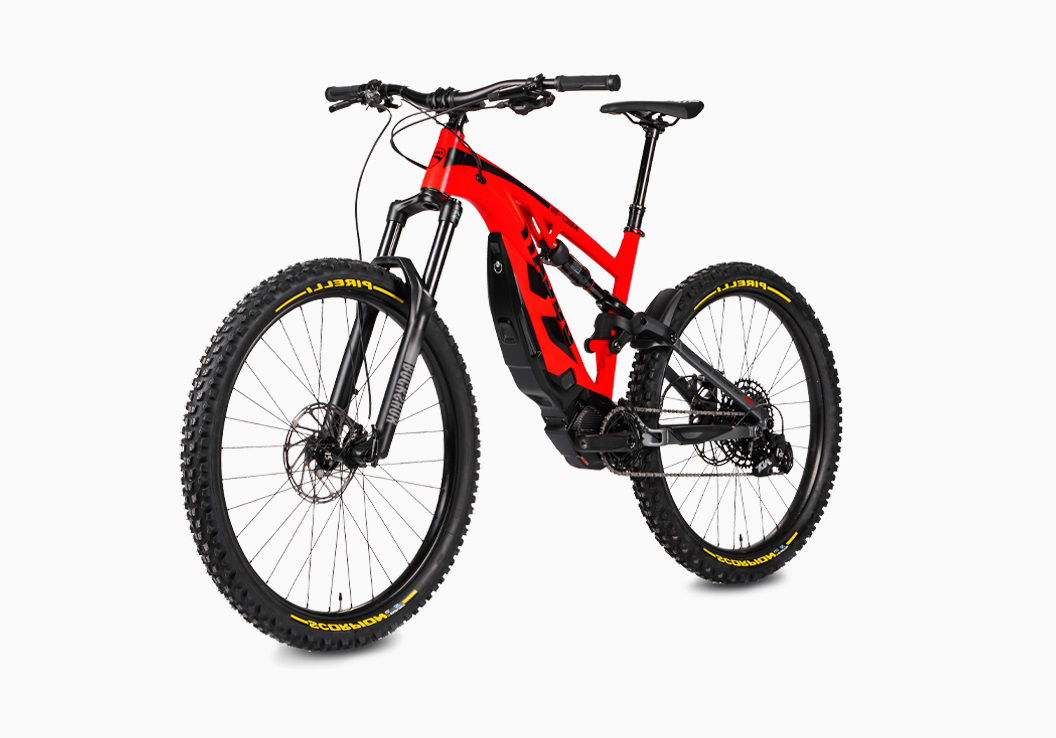
Ducati MIG-S frame, suspension, and brakes
As you’d expect from a Ducati, the MIG-S is draped in some top-spec kit from the mountain bike sector. The RockShox 35 RC fork and SuperDeluxe R shock absorber are lovely bits of kit, adjustable and feature 150mm of travel at the front and 140mm at the rear. The suspension is very slick, soaking up every bump, pothole, tree root and heavy landing I could throw at it.
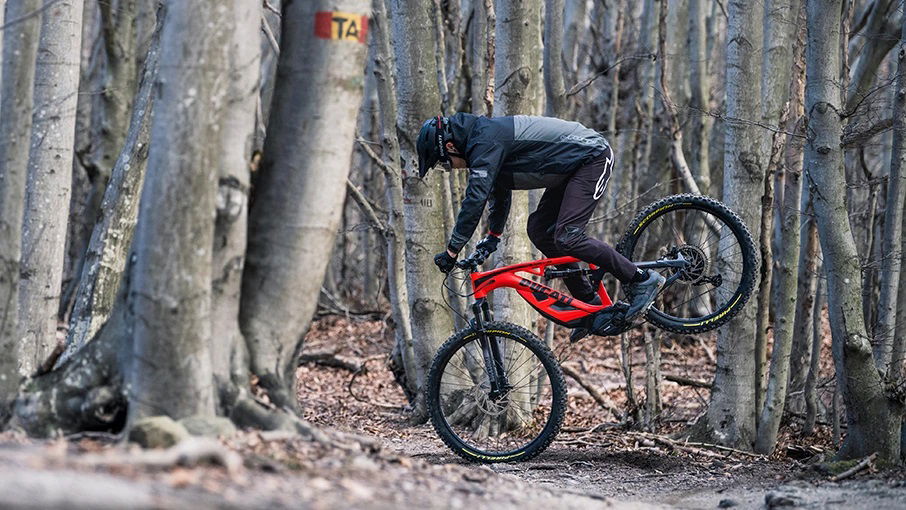
Like the suspension, the braking system is very trick and features SRAM Guide T 4-pot calipers and giant 203mm discs. The brakes are super strong and have bags of feel. Once you get to grips with the stopping power, you can easily perform fairly long stoppies with just one finger on the lever. Like most E-MTBs, the MIG-S only features a derailleur at the rear, and 12 gears are provided. First gear is a huge 50-tooth cog for pulling you up the steepest of climbs, while 12th gear is a much smaller 11-tooth item for cruising on the level.
Another neat touch is the KS dropper seat stem. It allows you to go from a tall seat to a low one at the flick of the handlebar-mounted lever. Once you get back on the road, flick the lever again and compressed gas pressure (produced when you lower the seat) pops it back into a more natural all-round position.
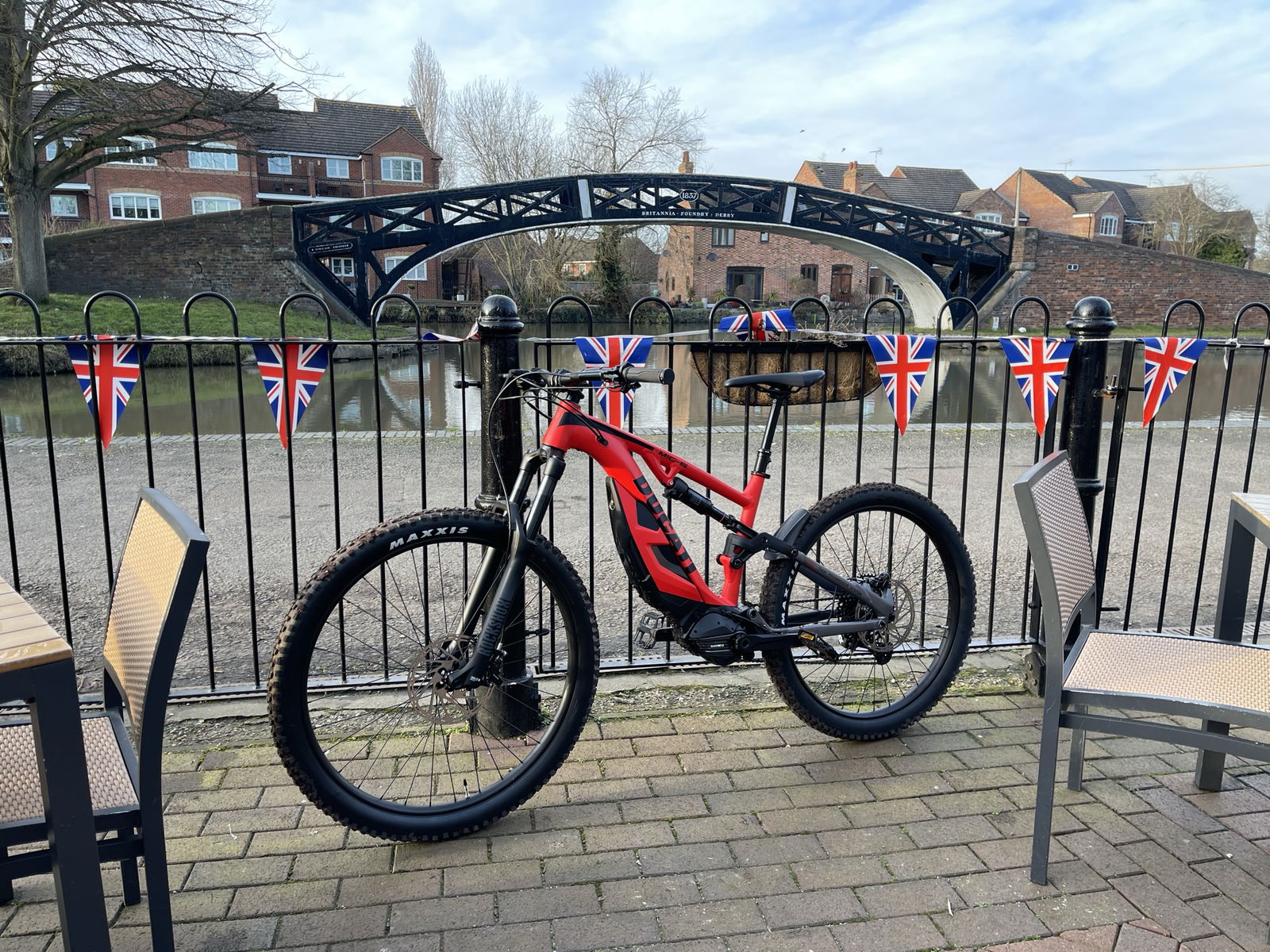
Ducati MIG-S verdict
As you’d expect from a Ducati-branded bike (built by E-MTB company Thok) the MIG-S is a super bit of kit. Its spec is very good, it looks fantastic and handles off-road trails and jumps exceptionally well. It is though (like any of these E-bikes) a fairly hefty chunk of cash, and when you compare it to the comparable Thok MIG 630 (the bike that it is closely related to), it’s around £400 more. That is not an insignificant amount of money, but for a Ducatisti who is looking for an E-MTB to park next to their Multistrada V4 or Panigale, it’s probably a price worth paying.
More information on the full range of Ducati E-bikes and E-MTBs can be found here.
.jpg?width=1600)
